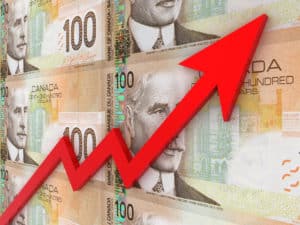Canadian Imperial Bank of Commerce (TSX:CM)(NYSE:CM) is down 15% since early December and dividend investors are wondering if this is a good time to buy the stock.
Let’s take a look at the bank to see if it deserves a place in your portfolio.
Retail and business banking
CIBC reported solid Q1 2015 earnings, despite a challenging environment for Canadian banks.
The company’s retail and business banking group earned adjusted net income of $625 million, down 4% compared to the same period in 2014. Revenue was up in both personal and business banking and loan losses were reduced compared to Q1 2014. These gains were offset by lower credit card revenues due to the disposition of the company’s Aeroplan portfolio.
CIBC has been working hard to make life easier for its customers.
The company offers a popular electronic cheque-cashing service that allows customers to deposit cheques without having to go to the branch. CIBC has also moved the origination of its mortgages out of the hands of brokers and into the branches.
The renewed focus on customer service is paying off. Customers find the bank easier to deal with, and stronger relationships with branch employees encourage the sale of additional credit and investment products.
Wealth management
CIBC’s wealth management group delivered strong Q1 2015 earnings of $128 million, a 12% year-over-year increase. The company is putting a lot of focus on growing this segment of the business.
In early 2014, the company completed the acquisition of Atlantic Trust Private Wealth Management. The $US210 million deal has proven to be a smart one, with the division contributing significantly to 2014 earnings.
Victor Dodig, CIBC’s CEO, has made it clear he wants to continue to expand the wealth management platform. The trend is popular right now, as Canada’s banks look for alternative sources of revenue in a difficult market.
Risks
CIBC is heavily exposed to the Canadian economy. Roughly 62% of Q1 2015 earnings came from the Canadian retail and business banking.
At the end of Q1, the company’s Canadian residential mortgage portfolio stood at $153 billion. Insured mortgages represented two-thirds of the total and the loan-to-value ratio on the uninsured component was 60%. About 17% of the mortgages are located in Alberta.
Oil and gas lending is a big concern for investors in the banking sector. CIBC had $16.7 billion in direct exposure and $29.7 billion in indirect exposure to the energy sector as of January 31.
CIBC has a Basel III Common Equity Tier 1 Ratio of 10.3%, which means it is very well capitalized and capable of dealing with any potential problems arising from the energy sector.
Dividend
CIBC just increased its quarterly dividend by three cents per share. The annualized payout of $4.24 per share currently yields about 4.6%.
Should you buy?
Concerns about the Canadian housing market are constantly discussed in the media and CIBC is carrying a large mortgage portfolio relative to its market capitalization of $36 billion. The company has a solid capital position and is capable of riding out a gradual housing slowdown, but a sharp selloff could cause some problems. Most analysts believe the housing bubble will deflate rather than pop.
CIBC has paid a dividend since 1868. The fact that the company just increased the payout suggests that management is confident about its earnings outlook. The stock is trading at an attractive 9.5 times forward earnings and two times book. Based on these metrics, long-term dividend investors should be comfortable adding the stock at current levels.







